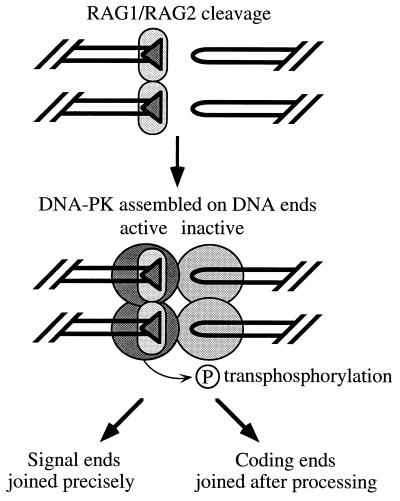FIG. 5.
Model for processing of hairpin ends by activation of DNA-PK. RAG1-RAG2 (small ovals) induce cleavage adjacent to two recombination signal sequences (shaded triangles) to form blunt signal ends and hairpin coding ends. The signal ends activate DNA-PK (large circles) so that phosphorylation in trans will lead to processing of the hairpin end. The target of transphosphorylation could be Ku, DNA-PKCS, or some other protein bound to the hairpin end. By contrast, DNA-PK bound to the hairpin coding end remains inactive as a kinase. Proteins bound to the signal ends may be protected from transphosphorylation by RAG1-RAG2, which remain bound to signal ends after cleavage (1).

